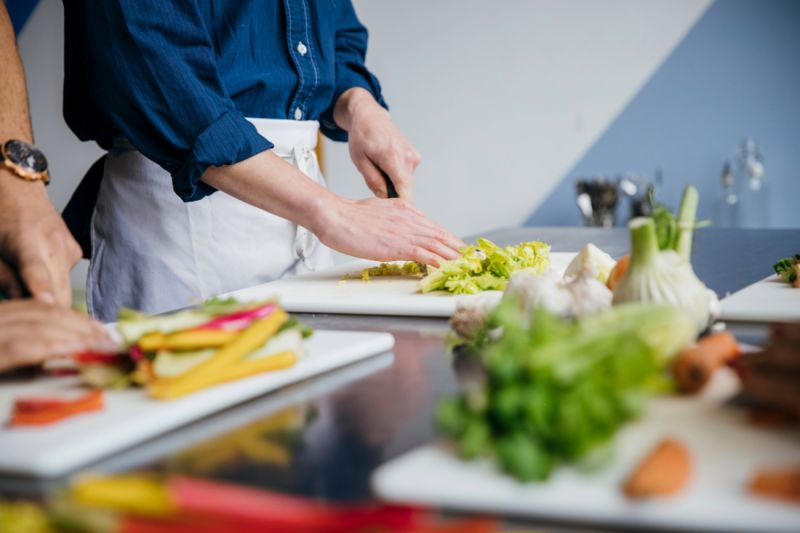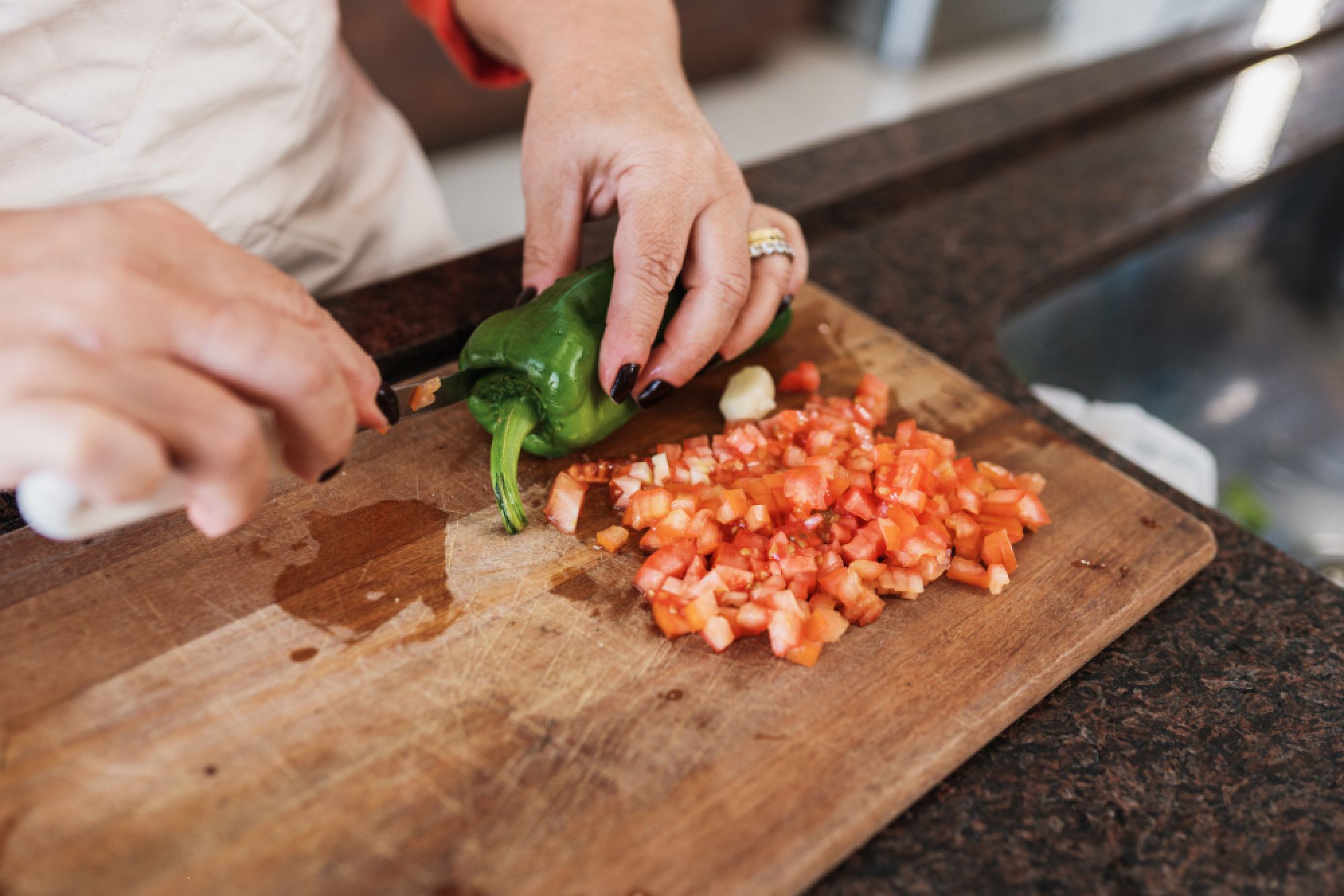Knife Skills Video
A well-handled knife makes cooking easier, faster, and most importantly, safer. Before we begin, check out this video to familiarise yourself with some of the techniques and tips taught in this guide and more.
Ready? Let’s sharpen your skills!
Safety First
Before using a knife, you must know how to use them safely and responsibly. Here are some safety tips for using knives in the kitchen:
- Point the blade away from your body when cutting, washing, or drying a knife.
- Vegetables can wobble, slide, and roll around on a chopping board, which can lead to accidents. If there’s no flat side to the vegetable, cut a thin piece off on one side so it sits flat on the chopping board.
- Always use a chopping board. Make sure the chopping board is secure and on a flat, stable and dry surface to prevent slipping.
- Never use the same knife to cut vegetables after cutting meat – this causes cross-contamination
- Use a knife suitable for the task and for the food you are cutting. If you try to force a blunt knife through a hard vegetable, it’s more likely to slip and cause an injury.
- Don’t leave knives loose on worktop surfaces where they can be accidentally knocked off
- Never grab a falling knife
- If carrying a knife across the kitchen, carry it pointed straight down, with the blade turned towards your thigh. Keep your arm rigid.
- Never put a knife in a sink full of water.
Next, learn The Claw
The Claw is a technique that helps protect your fingers while cutting. To master it, tuck your fingertips under and position your hand like a claw, keeping your middle finger slightly forward. Use all five fingers to firmly grip the food, with your thumb and little finger stabilising the sides. Always ensure your fingertips stay behind your knuckles, keeping them safely away from the knife blade.
Cutting techniques
Get to know the the basic cutting techniques that are used in everyday cooking.
Slicing
Use a rocking motion, moving the knife from tip to heel, to slice food cleanly. After each cut, slide your claw hand fingers back and move the knife instead of the food.
Dicing
Dicing is essential cutting your food into uniform cubes. It involves three steps:
- Cut the food into even slices.
- Stack 2 or 3 slices on the chopping board, then cut them lengthwise into thick sticks.
- Holding the sticks together with your claw hand, cut the sticks crosswise into dice.
Dicing an Onion
Dicing an onion is a little different! Cut it in half from stem to root and peel, leaving the root intact. Place it flat side down and make horizontal cuts toward the root, stopping short of cutting through. Then, make vertical slices, followed by downward cuts to create even dices. Keep your fingers tucked in the claw shape for safety.
Mincing
Ginger and garlic need to be minced into tiny pieces to be mixed well into a dish. Place the knife next to the item to be chopped and place your free hand on top of the knife near the spine (the dull upper edge), keeping your fingers flat. Keep the tip down and rock the knife back and forth in a slicing motion until finely minced.
Be sure to check out The Recipe Hub to practice your new knife skills!
Disclaimer: The information provided in this blog is for general guidance only. Readers who choose to apply these knife skills do so at their own risk. Ulster University is not responsible for any injuries, damages, or accidents that may occur as a result of using the techniques described. Always exercise caution when handling knives and consider seeking professional instruction if unsure.




















